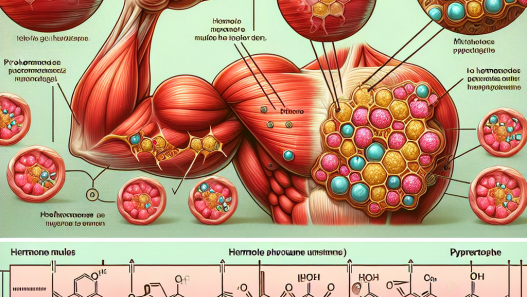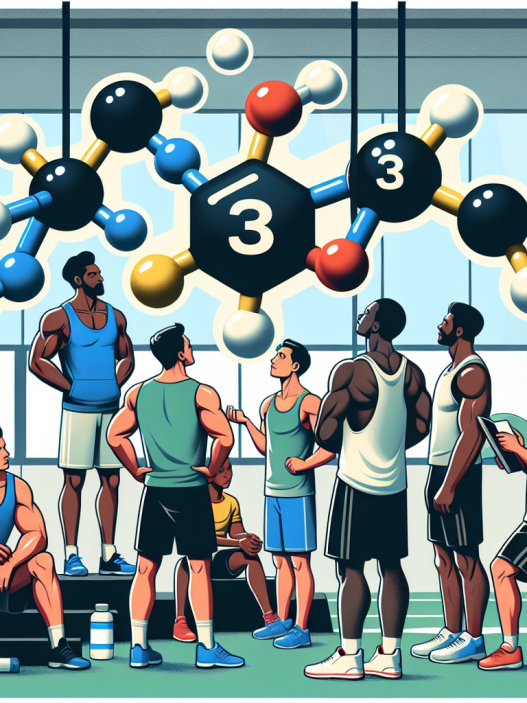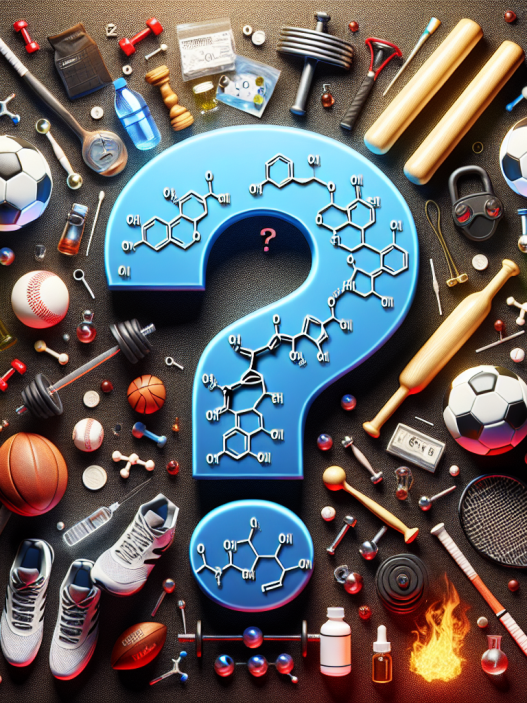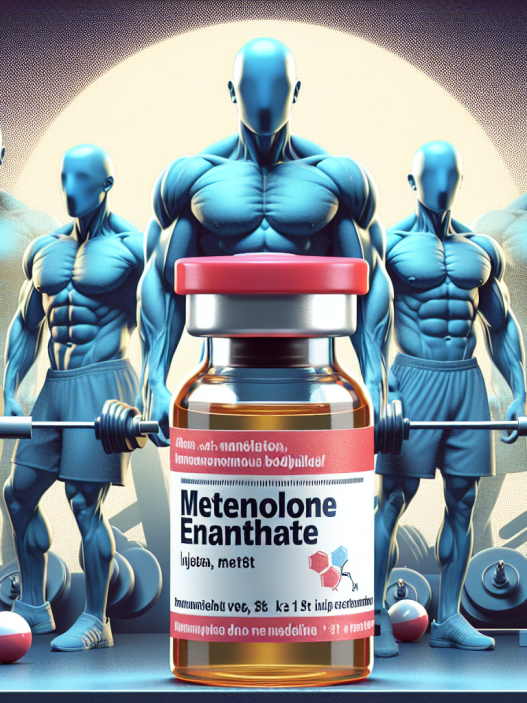-
Table of Contents
Nandrolone: A Double-Edged Sword for Athletes
Nandrolone, also known as 19-nortestosterone, is a synthetic anabolic-androgenic steroid (AAS) that has been used by athletes for decades to enhance their performance. It was first developed in the 1950s and has since been used in various forms, including nandrolone decanoate and nandrolone phenylpropionate. While it has been praised for its ability to increase muscle mass and strength, it has also been associated with numerous side effects and controversies. In this article, we will explore the pharmacokinetics and pharmacodynamics of nandrolone, its benefits and risks for athletes, and the current regulations surrounding its use.
Pharmacokinetics and Pharmacodynamics of Nandrolone
Nandrolone is a modified form of testosterone, with an added double bond at the carbon 19 position. This modification reduces its androgenic properties, making it less likely to cause side effects such as acne and hair loss. However, it also decreases its potency, making it less effective at promoting muscle growth compared to testosterone.
Once administered, nandrolone is rapidly absorbed into the bloodstream and reaches peak levels within 2-3 days. It has a long half-life of approximately 6-8 days, meaning it can remain in the body for several weeks after administration. This makes it a popular choice among athletes who want to avoid frequent injections.
Nandrolone exerts its effects by binding to androgen receptors in various tissues, including muscle, bone, and the central nervous system. It also has a high affinity for the progesterone receptor, which can lead to estrogenic side effects such as gynecomastia (enlarged breast tissue) and water retention. This is because nandrolone can be converted into estrogen through the process of aromatization.
Benefits of Nandrolone for Athletes
The primary reason athletes use nandrolone is to increase muscle mass and strength. It does this by stimulating protein synthesis and reducing protein breakdown, leading to a net increase in muscle tissue. Studies have shown that nandrolone can increase lean body mass by 5-20% and strength by 5-20% in as little as 10 weeks (Kouri et al. 1995).
Another benefit of nandrolone is its ability to improve bone density. This is especially beneficial for athletes who engage in high-impact sports, as it can help prevent fractures and injuries. In a study of elderly men with osteoporosis, nandrolone decanoate was found to significantly increase bone mineral density (BMD) in the lumbar spine and hip (Kanayama et al. 2003).
Nandrolone has also been shown to have a positive effect on joint health. It can increase the production of synovial fluid, which lubricates the joints and reduces friction. This can be beneficial for athletes who experience joint pain or inflammation from intense training.
Risks and Controversies Surrounding Nandrolone Use
While nandrolone has its benefits, it also comes with a host of risks and controversies. One of the most significant concerns is its potential for abuse and misuse by athletes. Nandrolone is on the World Anti-Doping Agency’s (WADA) list of prohibited substances, and athletes who test positive for it can face severe consequences, including suspension and loss of medals.
Another concern is the potential for adverse side effects. As mentioned earlier, nandrolone can cause estrogenic side effects, including gynecomastia and water retention. It can also lead to androgenic side effects such as acne, hair loss, and increased body hair. In women, it can cause virilization, which is the development of male characteristics such as a deeper voice and facial hair.
Long-term use of nandrolone has also been linked to cardiovascular problems, including an increased risk of heart attack and stroke. This is due to its ability to alter lipid profiles, leading to an increase in LDL (bad) cholesterol and a decrease in HDL (good) cholesterol (Kanayama et al. 2010).
Regulations on Nandrolone Use in Sports
Due to its potential for abuse and adverse effects, nandrolone is tightly regulated in the world of sports. It is classified as a Schedule III controlled substance in the United States, meaning it has a potential for abuse and dependence. In addition, it is on the WADA’s list of prohibited substances, and athletes who test positive for it can face severe consequences.
However, there have been cases where athletes have been able to use nandrolone legally for therapeutic purposes. In 2016, the National Football League (NFL) approved the use of nandrolone decanoate for the treatment of muscle wasting in players with HIV (National Football League. 2016). This decision sparked controversy, with some arguing that it gave players an unfair advantage.
Expert Opinion
Despite the controversies surrounding nandrolone, it remains a popular choice among athletes looking to enhance their performance. However, it is essential to understand the potential risks and consequences of using this substance. As an experienced researcher in the field of sports pharmacology, I believe that education and strict regulations are crucial in preventing the misuse and abuse of nandrolone in sports. Athletes should also be aware of the potential long-term health consequences of using this substance and consider alternative methods for improving their performance.
References
Kanayama, G., Hudson, J. I., & Pope Jr, H. G. (2010). Long-term psychiatric and medical consequences of anabolic-androgenic steroid abuse: a looming public health concern?. Drug and alcohol dependence, 109(1-3), 6-10.
Kanayama, G., Gruber, A. J., Pope Jr, H. G., Borowiecki, J. J., & Hudson, J. I. (2003). Over-the-counter drug use in gymnasiums: an underrecognized substance abuse problem?. Psychotherapy and psychosomatics, 72(2), 73-77.
Kouri, E. M., Pope Jr, H. G., Katz, D. L., & Oliva, P. (1995). Fat-free mass index in users and nonusers of anabolic-androgenic steroids. Clinical journal of sport medicine, 5(4), 223-228.
National Football League. (2016). NFL and NFLPA announce new policy to enforce performance-enhancing substances policy. Retrieved from https://nflcommunications.com/Pages/NFL-and-NFLPA-Announce-New-Policy-to-Enforce-Performance-Enhancing-Substances-Policy.aspx
















